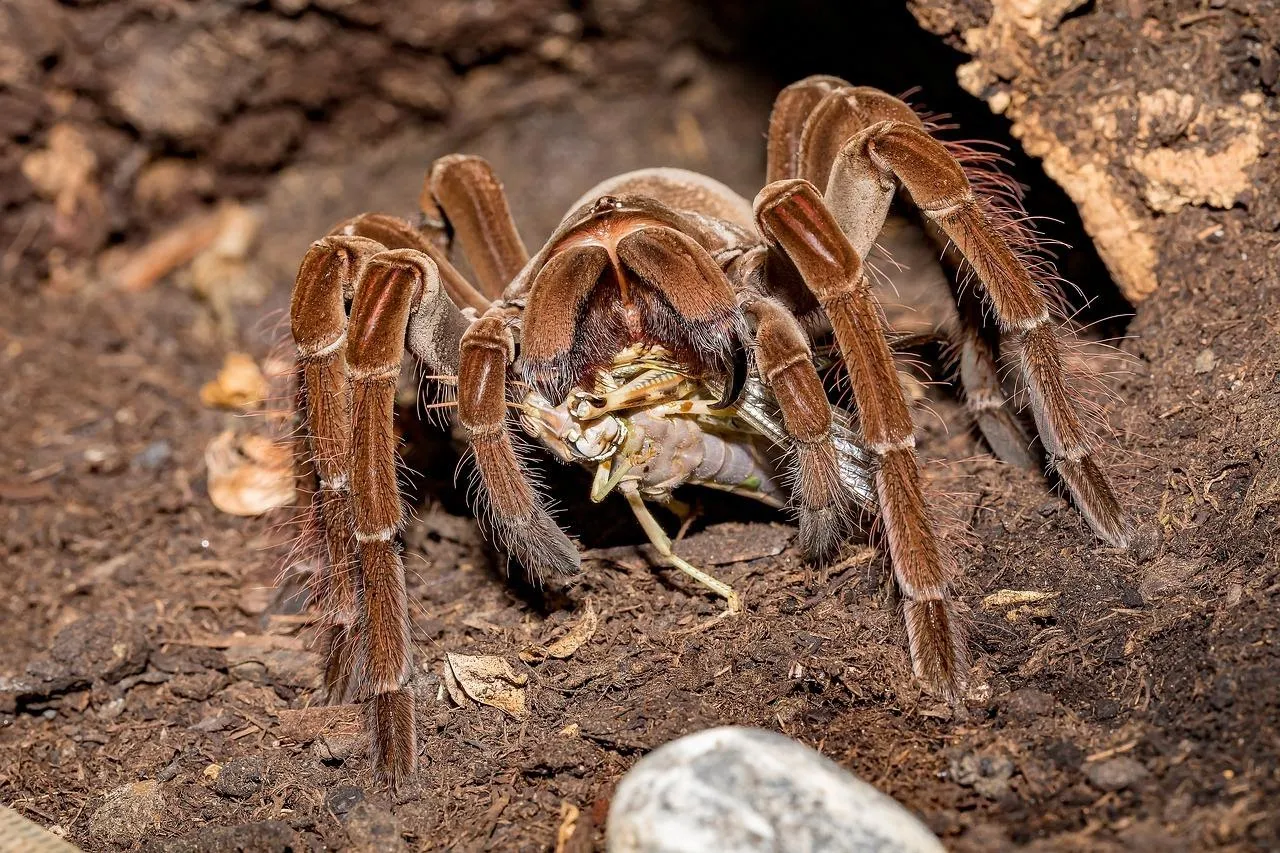The Risks of Eating Tarantulas
The practice of eating tarantulas, while a cultural norm in some parts of the world, comes with potential risks that individuals should be aware of before considering it. These risks span from immediate health concerns to long-term impacts. Understanding these dangers is crucial for anyone curious about entomophagy, or the consumption of insects. It is important to approach this practice with caution and a thorough understanding of the potential hazards involved. The following facts provide a comprehensive overview of the primary risks associated with eating tarantulas, ensuring that you are well-informed before deciding to include this unique food source in your diet.
Tarantula Bites and Venom
One of the most immediate dangers of handling and consuming tarantulas is the risk of a bite. While tarantula venom is generally not lethal to humans, it can cause significant pain, swelling, and discomfort. The severity of the reaction can vary depending on the species of the tarantula and the individual’s sensitivity. Furthermore, even if the tarantula is cooked, the venom components may still cause some degree of reaction. This is particularly true if the cooking process is insufficient to denature the proteins responsible for the venom’s effects. Therefore, proper handling and preparation are essential to minimize the risk of exposure to the venom. Always ensure that the tarantula is thoroughly cleaned and prepared by an expert.
Allergic Reactions and Sensitivities

Like any food, tarantulas can trigger allergic reactions in some individuals. These reactions can range from mild symptoms, such as skin rashes and itching, to severe, life-threatening anaphylaxis. The allergens in tarantulas are similar to those found in other arthropods like shellfish and dust mites, meaning that people with existing allergies to these might be at a higher risk. Before consuming tarantulas, it is imperative to be aware of your personal allergies. Consider consulting with an allergist before consuming tarantulas if you have a history of allergies. This will help identify and manage potential risks. Consuming even a small amount of tarantula could trigger a severe allergic reaction.
Parasites and Diseases
Tarantulas, like any other animal, can harbor parasites and carry diseases that can be transmitted to humans. These can include various bacteria, fungi, and other microorganisms that can cause gastrointestinal distress, infections, and other health problems. Thorough cooking is essential to kill any potential pathogens, but it is not always foolproof. The environment from which the tarantula is sourced plays a significant role in the risk of exposure to parasites and diseases. Wild-caught tarantulas are more likely to carry these risks than those bred in controlled environments. Therefore, sourcing tarantulas from reputable suppliers and ensuring they are properly prepared is critical to minimize the risk of infection.
Potential for Digestive Issues
Eating tarantulas can sometimes lead to digestive issues, even if the tarantula is properly prepared and free of pathogens. The exoskeleton of the tarantula, which is primarily made of chitin, can be difficult for the human digestive system to break down. This can result in symptoms such as bloating, gas, and abdominal discomfort, particularly in individuals who are not accustomed to consuming insects. Furthermore, the diet of the tarantula can also impact its digestibility. Tarantulas that have consumed certain toxins or substances can pass these on to the consumer. Therefore, it is crucial to consider the entire process, including the tarantula’s diet. Start with small portions to assess your body’s response and ensure you are consuming tarantulas prepared properly.
Tarantula Eating Safety Tips

Proper Preparation and Cooking
Thorough preparation and cooking are paramount to minimizing the risks associated with eating tarantulas. The tarantula should be properly cleaned to remove any dirt, debris, or potential parasites. The cooking process must be thorough, with the tarantula being cooked at a high enough temperature for a sufficient amount of time to kill any pathogens and denature allergens. Different cooking methods are used in different cultures. It is vital to be familiar with the proper cooking method before preparing a tarantula. Methods like roasting, frying, or grilling are commonly used. Ensure that the internal temperature reaches a safe level to eliminate potential health hazards. The overall goal is to ensure that the tarantula is safe for consumption.
Identifying Safe Tarantulas for Consumption
Not all tarantulas are created equal when it comes to edibility. Certain species are known to be more palatable and less likely to cause adverse reactions than others. For example, some species are known to have lower levels of venom or fewer allergenic compounds. It is best to research the specific species of tarantula before consuming it. Also, the origin of the tarantula is important. Tarantulas that are captive-bred and sourced from reputable suppliers are generally safer, as they are less likely to carry parasites or have been exposed to harmful substances. Avoid eating tarantulas that have been exposed to pesticides or other chemicals. Ensure you know the origin of the tarantula and that it comes from a safe and reliable source.
Sourcing Tarantulas Responsibly

The way tarantulas are sourced plays a crucial role in food safety and sustainability. Opting for tarantulas from reputable suppliers who practice ethical farming methods is essential. These suppliers often raise their tarantulas in controlled environments, reducing the risk of exposure to diseases, parasites, and contaminants. Support suppliers that focus on sustainable practices, which can ensure the long-term health of tarantula populations and minimize environmental impact. Always verify the origin and sourcing practices of the tarantulas you are considering eating. Responsible sourcing not only safeguards your health but also contributes to the ethical treatment of these creatures and the environment.
Cultural Significance and Consumption
Common Tarantula Eating Practices
In various cultures around the world, eating tarantulas is a culinary tradition. In Cambodia, for example, fried tarantulas are a popular street food, considered a delicacy. They are often seasoned with spices and herbs, and enjoyed for their unique flavor and texture. These spiders are typically caught in the wild, then carefully prepared. In other regions, tarantulas might be roasted, grilled, or even used in stews. The preparation methods and cultural context significantly influence the perceived safety and enjoyment of tarantula consumption. Understanding these practices can provide valuable insights into the responsible and safe consumption of tarantulas.
The Future of Entomophagy

Entomophagy, or the practice of eating insects, is gaining traction as a sustainable and nutritious food source. With growing concerns about the environmental impact of traditional livestock farming, insects like tarantulas could play a more significant role in diets. They are rich in protein, healthy fats, and essential nutrients. As research continues and the practice becomes more widespread, it will be essential to develop and implement rigorous food safety standards to ensure the well-being of consumers. The future of entomophagy will depend on balancing culinary innovation with a commitment to safety, sustainability, and responsible sourcing.
